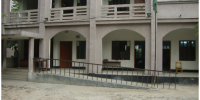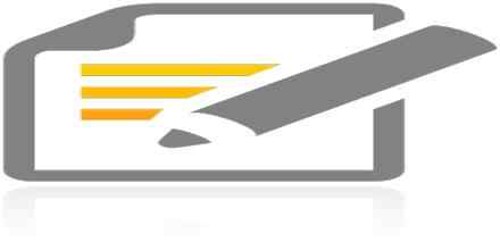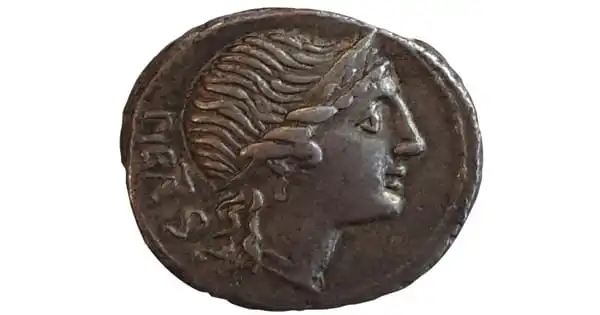Introduction
TGTDCL was formed in November 1964 as a joint Stock Company (Under the Company’s Act 1913) of the central Government of Pakistan on the one hand and Pakistan Shell Oil Company on the other. The authorized capital was Taka 17.8 million only, divided into 17800 shares of Taka 10.00 each. Ninety percent of the shares were subscribed by the then central Government of Pakistan and remaining ten percent by the Shell Oil Company. In 2010 the authorized capital reached to Taka 20000 million. Therefore, it is definitely a remarkable success story. Over the last few years, the financial performance of TGTDCL had been increasing.
Accounting Practices.
Titas Gas T & D Co. Ltd follows the Generally Accepted Accounting Principles (GAAP) as per Companies Act 1994 and International Accounting Standards (IAS) as adopted by the Institute of Chartered Accountants of Bangladesh. The financial statements of the company are prepared using the historical cost convention and on a going concern basis.
Research Problem. The research is designed to address the following issues:
- What is the strategy Titas following and what are the threats and scope of opportunities for TGTDCL.
- What is the capital structure of TGTDCL and how they decide on the issue of asset-liability management? This is one of the core issues of financial management which is important for the efficient performance of any business organization.
- What is the future perspective of TGTDCL? What should they do for improving their performance? This part will help in forming the suggestions and recommendations.
Financial Performance of Titas Gas T & D Co. Ltd. (2006 – 2010).
Followings are the key considerations:
- Financial performance analysis is the process of identifying the financial strength and weaknesses of the firm. It is the starting point for making plan. Ratio analysis is a powerful tool of financial analysis. Ratios help to summarize large quantities of financial data and to make qualitative judgment about the firm’s financial performance.
- Keeping the above in view, financial ratio analysis of the organization has been calculated over a period of five years to assess the financial performance and as well to find out the trend for the future. In essence, these rudimentary tools of simple ratios remain important and useful almost for all kinds of financial evaluation.
- Since these ratios are widely used and easy to interpret, so no elaborate description will be adopted. Data tabulation and a very brief analysis should serve the purpose of exploration. (Shown in Annexure).
Internal Liquidity Ratios.
- Current Ratio = Current Asset / Current Liabilities.
The current ratio is a measure of short-term liquidity. As a whole the Current Ratio shows a mixed trend. However, the current ratio of the last five years of the company is somewhat more than 1.
- Quick Ratio = (Current Asset – Inventory) / Current Liabilities.
Quick Ratio shows similar trend like that of Current Ratio with similar observation.
- Cash Ratio = Cash / Current Liabilities
Leverage Ratios.
Total debt ratio and debt-equity ratios are included in this category.
- Total Debt Ratio (TDR) = (Total Assets–Total Equity)/Total Assets,
From the TDR figures, it seems to be a usual trend on an average business. However the debt includes also the internal debts. Although internal debt has a cost, for TGTDCL as a whole, the external debt is a more important consideration.
- Debt-Equity Ratio (DER) = Total Debt (TD)/Total Equity (TE).
The debt–equity ratio shows a similar trend like that of total debt ratio and the observations are also similar.
Asset Utilization Ratios.
Inventory turnover, NWC turnover and total asset turnover are included here.
- Inventory Turnover = Cost of Goods Sold/Average Inventory.
The increasing ratio of inventory turnover indicates better efficiency in producing and selling of goods.
- NWC Turnover = Sales / NWC.
The mixed ratio of NWC Turnover indicates reduced/increased efficiency in working capital management and tying up of sometimes more working capital in comparison to sales.
- Total Asset Turnover (TAT) = Sales / Total Assets
The TAT shows the sales against each unit of total asset. The mixed trend of ratios show confused efficiency of TAT.
Operating Profitability Ratios.
Net Profit Margin, ROA and ROE are included under this.
- Net Profit Margin = Net Income / Net Sales
Any company pays a great deal of attention to its profit margin. The net profit margin of TGTDCL shows an increasing trend.
- Return on Total Capital =(Net Income + Gross Interest Expense) /Total Capital
This ratio relates the firm’s earnings to all the capital involved. The company’s last five years return on capital shows an increasing trend.
Summary of Different Ratio Analysis
In a nutshell the operating efficiency picture of TGTDCL is not bad. The company has an increasing operating profitability. Return on Fixed Asset and Return on Capital Employed of the company increases over time which indicates positive sign for the company. Same applies for asset utilization or financial leverage.
AN ANALYSIS OF THE CAPITAL STRUCTURE OF TGTDCL
Capital structure is one of the most important issues of the corporate finance, which is applicable for any kind of business enterprise. It refers to a firm’s mix of long term financing. In fact this fundamental issue accrues from the core philosophy of the business; i.e. to maximize the value of the firm.
Financial leverage is one of the central issues of financial management in general and to the capital structure in particular. When the ROA is more than the cost of debt, the advantage of debt financing is evident. This may be proved empirically through arbitrary numerical analysis. But the ROA must be more than the cost of borrowing.
The basic concept may be derived from the fundamental accounting equation, i.e. Asset = Liability + Stockholders Equity. The problem is the composition of the right hand side of the equation; the trade off between the liability and stockholders equity or may be referred as the balancing between return and risk / financial distress.
Cost of Capital for TGTDCL.
Cost of Capital analysis is a basic issue to analyze the capital structure. It is comparatively easier to find the cost of debt or preferred share, as these are asset with fixed payment but it is comparatively difficult to precisely measure the cost of equity. However, the equity is in no way cost free, although there is no binding of paying any return to the common stock holders. The basis of calculating the cost of equity is the opportunity cost of capital. The rational investor will seek for the best alternative investment opportunity and thus forgo some investment opportunity with comparable risk and that is considered as the opportunity cost or the cost of capital. But the entire concept is not applicable for TGTDCL in true sense as it is a government organization. As a business organization, TGTDCL also tries to minimize its cost of capital.
- The company takes long-term loan from local and foreign sources for implementing the development projects taken by GOB under Annual Development Program (ADP). The interest rate of this loan is fixed by GOB. In the mean time, the entire loan in local currency from GOB has been converted into equity. As a result, the borrowed fund of the company has been reduced and the company will face less risk.
The Capital Structure of TGTDCL.
The overall capital structure of TGTDCL has changed quite prominently. The portion of debt has declined in the last five years, as indicated by its leverage ratios. As a whole, TGTDCL relies mostly on its own internal financing, which is quite apparent from the leverage ratios. However the external loan is indeed very important for the organization, as it provides the leverage effect and along with that presents the elements of opportunity and threat.
Optimum Capital Structure for TGTDCL.
The issue of optimum capital structure is intrinsically related to the financial performance of the firm. The efficient firm has the advantage of using the leverage effect of debt financing; whereas the same may prove to be a source of financial distress for a weaker firm. This is obvious, on the simple understanding that the firm must earn the return which is more than the cost of debt. This may as well be understood from the equation of required return on equity; RE = RA + D/E {RA – RD (1 – TC)}; in this equation the RA must be more than RD (1 – TC) to provide a positive impact on the RE. At this back drop, it can be deduced that at the present level of efficiency, TGTDCL should rely on own capital and discourage external financing, till it improves its efficiency. This is evident from the ratio analysis. The Return on Fixed Asset of the last two years (2009 and 2010) is 47.45 and 64.54 respectively. This has to be improved to have the leverage benefit of debt financing. Besides following are the additional points for improving the capital structure of TGTDCL.
- TGTDCL should adopt the concept of opportunity cost to improve its investment decision; which will also help to determine the cost of the equity, practice of NVP analysis and shaping of the optimum capital structure.
- Study of the aggregate capital structure may be helpful for the overall understanding and broad overview and planning; but the capital structure would be greatly determined by the type of the industry and the performance of the particular business unit. So the specific capital structure for each business unit to be determined separately. It is worth mentioning that firms in similar industries tend to have similar capital structure, suggesting that the nature of their assets and operations is an important determinant of capital structure.
- As it improves its management of capital structure and adopts the management techniques as suggested, it should calculate the financial planning figures based on the market value; while the book value remains good for financial accounting purpose. However this is a finer aspect of the management and to be adopted at a later stage.
Future Perspectives of Titas
This part of the study is directed towards the analysis of the future trend and performances of TGTDCL with a view to suggest measures for improvement. The financial aspect remains the central focus; however the other related aspects are also included very briefly for comprehensiveness. Indeed, it’s difficult to complete the financial analysis of an organization without a mention of related fields. The findings of the preceding study, along with some additional analysis would help to identify the potentials and the difficulties of the future. TGTDCL should take necessary steps with change of time. It’s neither the technology nor the size of the business, but the managerial efficiency that matters most for the success of today’s business. Because it’s easier to overcome the deficiencies of other fields, but management efficiency is much complicated to be achieved; besides time and efforts, the organizational set up and practice are very important factors in this regard. So TGTDCL needs to shape and adjust its strategies taking into consideration all these realities.
Introduction of Capital Asset Pricing Model (CAPM).
The issue of cost of capital for TGTDCL and the related shortcomings has been already discussed beforehand. In this part a step by step procedure has been suggested to improve upon the capital management. The basic problem in this case as already has been mentioned is determining the cost of own capital. Once that is done, the portfolio cost can be determined simply through the WACC technique. The introduction of CAPM should be the appropriate tool for solving the problem. CAPM refers to technique of calculating the expected return of the portfolio comprising of different components of capital having differences of cost and risk. The classical application of the CAPM for TGTDCL may be difficult at the moment and the causes have been already discussed.
FINDINGS OF THE STUDY
If considered broadly, only three major aspects have been covered in this paper; strategic analysis, financial analysis and capital structure analysis. Summary of findings listed under three major heads are as follows:
Strategic Analysis.
For being a government organization TGTDCL has got some distinct factors which makes it strengthened against the threats of new entrants. It enjoys monopoly in its franchise area and there is no chance of entering new competitors in its area of operation in near future. Threat of substitute products is also very low. There are few products which can be used as substitute product of gas but they are comparatively very costly. The business activities of the organization is fully controlled by policies, rules and regulations framed by Government that is, policies related to gas price fixation, demand and supply and distribution is fully under the control of Government. So the bargaining power of buyers is very low. Even, the customers have very limited alternatives of using the product of the company which will be very costly for them. TGTDCL faces no rivalry within its industry. There are other companies like Titas who are engaged in transmitting and distributing gas but each of those enjoys monopoly in their franchise area
Financial Analysis.
In a nutshell the operating efficiency picture of the organization is not bad. The analysis of data of last five years shows an increasing trend of profitability. Return on Fixed Asset of the company increases over time which indicates positive sign for the organization. Same applies for asset utilization or financial leverage. The company is reducing its debt portion every year which is reducing its financial risk.
The Capital Structure.
The capital structure is a key issue of financial management. The ratio of debt and equity is the trade off between leverage and risk. Apparently, it seems that TGTDCL maintains a debt equity ratio like most of the business organizations. The analysis of last five years data shows that the company is in a trend of reducing it debt portion relative to its equity (the debt-equity ratio in 2006 is 44 : 56 whereas in 2010 is 10 : 90). However after considering the aspect of internal debt and also the distribution of external debt, it is evident that TGTDCL relies on external financing very less. Indeed, it’s no point taking loan unless the return is more than the cost of the loan. The other important points on the issue are as follows:
- It is difficult to ascertain the cost of equity (own capital) for TGTDCL as it does not take into account the opportunity cost. This also means the inability to practice the concept of NPV analysis.
- The concept of optimum capital structure is not applicable to TGTDCL in the classic sense. This is apparent from a general understanding and it can also be empirically proved through the application of the MM propositions.
Limitation of the Study
Considering the size and diversification of the organization, the subject is of a vast issue. It could have been better suited for a group of researchers to study on this subject. It has been already mentioned that, the report is based on the secondary data analysis; in that the data extraction from the annual reports had been a major source of information. The reports of TGTDCL have been prepared by audit firms in different years having minor variations in the heads/format. Sometimes data incompatibility between successive years and/or other reports created difficulties in deducing the correct figure. The problem has been taken care by consulting the concerned managers. But analyzing TGTDCL as a whole to find out the reasons and remedies for different problems is very tough for me. But with my limited knowledge and limited information, I tried my best to evaluate the performance of the company.
Conclusion
If considered broadly, this research has been covered only three major aspects; strategic analysis, financial analysis and the capital structure analysis.
For being a government organization, TGTDCL enjoys some opportunities which are not available in conventional business organizations. First of all, the company enjoys monopoly in its franchise area and there is no chance of entering new organizations to its area of operation in near future. So, the company faces no rivalry within its industry. This distinct factor makes TGTDCL strengthened against the threats of new entrants. Threat of substitute products is also very low as till now no other product is found as the substitution of natural gas. The effect of bargaining power of buyers gets reduced as policies related to gas price fixation, demand & supply and distribution is fully under the control of Government.
In a nutshell the operating efficiency picture of the organization is not bad. The analysis of data of last five years shows an increasing trend of profitability. Return on Fixed Asset of the company increases over time which indicates positive sign for the company. Same applies for asset utilization or financial leverage.
Apparently, it seems that TGTDCL maintains a debt-equity ratio like most of the business organizations (around 50%). However, after considering the aspect of internal debt and also the distribution of external debt, it is evident that TGTDCL relies very less on external financing. This policy is in consistent with the existing ROA. The debt-equity ratio of last five years (2006-10) indicates a decrease of debt related to equity.
It is difficult to ascertain the cost of equity (own capital) for TGTDCL as it does not take into account the opportunity cost. This also means the inability to practice the concept of NPV analysis. The concept of optimum capital structure is not applicable to TGTDCL in the classic sense. This is apparent from the financial performance.
Recommendations
In spite of being a successful organization the followings are recommended based on the whole research to be more efficient and successful in future.
Quick Decision making
As the organization is entangled with the sloppy Bureaucratic System, every work whether it is small or large follows through the same procedure of approval. In every step, the employees follow the hardcore bureaucratic procedure, which takes a lot of time in decision making. The line managers are not empowered to take decisions himself, so in every aspect they take consent from the higher authority to make any decision. Therefore, the line managers should entitled with proper authority to make quick decisions.
Logistic Support
At the age of modern technology and internet, modern logistic support is quite absent in this organization. The office still uses typewriter for typing. There are few computers in the office to perform the work quickly. The company still dependent on file based manual work, which really hamper implementation process in this modern age. Instead of relying heavily on manual paper work, skillful use of computers and sophisticated, advanced financial software can shorten the processing time quite considerably. A computer based network which can connect all its zonal offices with the head office is essential so that the head office can monitor other offices all the time.
Development of Skilled Manpower
The organization should focus on recruiting officers having the right academic qualifications for Finance Department. Instead of hiring people with management or accounting, it should recruit business graduates with finance background. The recruiting process should be fare and free from any kind of corruption and political influence. The employees should also be trained up properly after employment.
Strong Management and Monitoring System
The management should be strong enough to set the right person in right place. Promotion of officers and staffs should be given on the basis of efficiency and skill. Proper monitoring is essential to the activities of different zonal offices. The management should check any kind of corruption at any cost.
Increasing Customer Satisfaction
The company should try to be more customer responsive. Sometimes, the customers of the company are becoming victims of some corrupted employees and inefficient contractors. They are not receiving the expected services from them. This should be checked strictly.
















